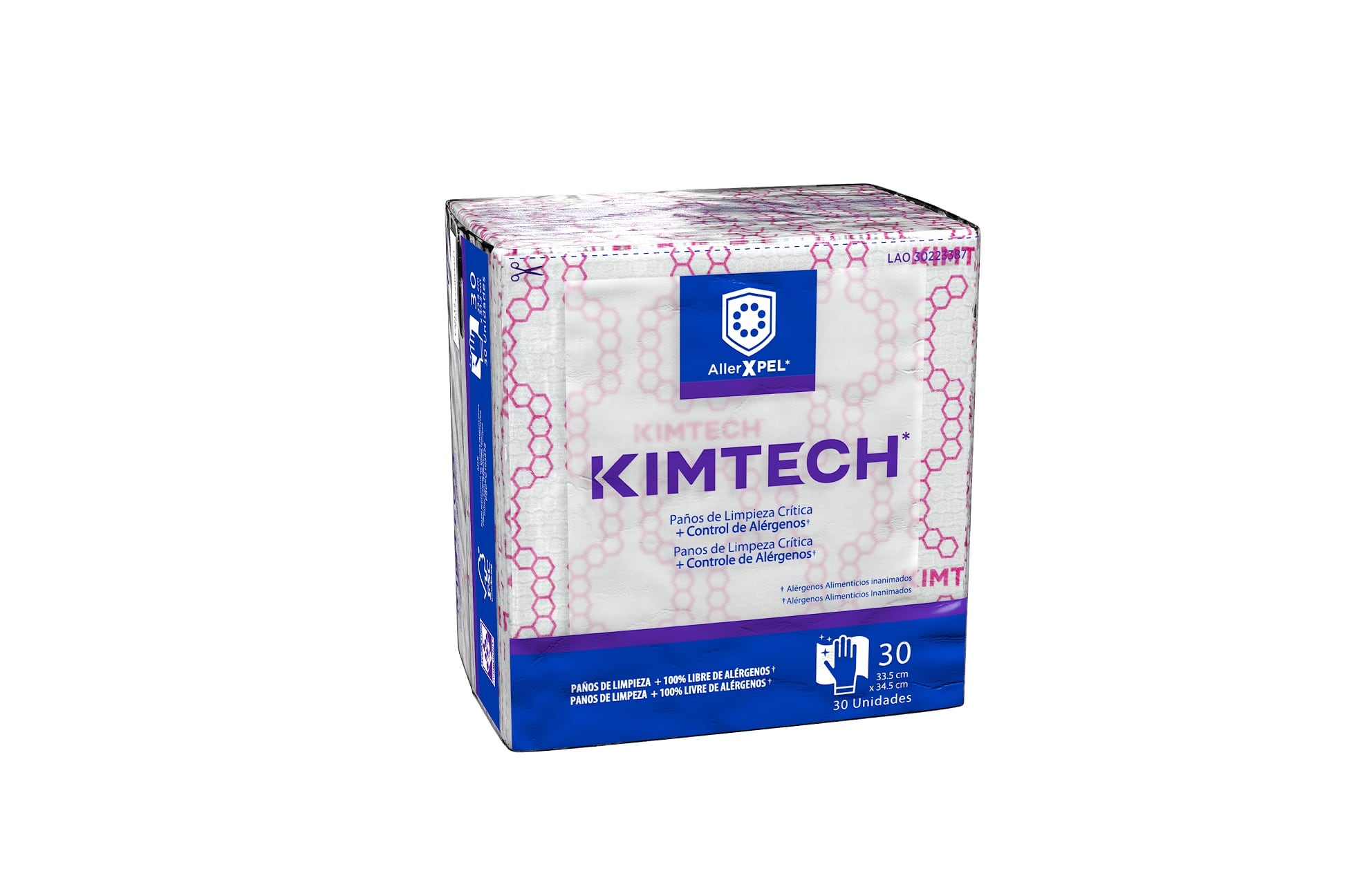The Kimtech Precision Cleaning Cloths and Allergen Control and the Continuum System were unveiled at the Global Food Safety Conference in Houston, Texas.
The disposable cloth, designed to remove allergens from food contact surfaces, will be launched in Latin America first and to the rest of the world by the end of the year.
It works on surfaces such as stainless steel and those that have direct contact with food like the inside of equipment and conveyor belts.
Basic principles of cleaning
Phillip Jarpa, global segment marketing manager of food processing at Kimberly-Clark Professional, said it is primarily for controlled wet type of cleaning usually found in dry environments.

“The reason being that is where most of the clean out of place happens so you usually apply force and we know that those types of industries are focussed on controlling as much as they can the presence of moisture. So the cloths are not only good at removing but also helping drying those surfaces and preventing moisture,” he told FoodQualityNews at the event.
“This is important because removing allergens is about not just separating but also removing from surfaces and to avoid redeposit. We were able to remove up to 100% of some of the most unwanted allergens by combining with water.
“This cloth is meant to be integrated in the current process without affecting product changeover time, for example. It is not a new step for dry processing environments it is replacing some of the supplies they are using so there should be no impact on cleaning time. We are not thinking about high volume because these are usually very precise tasks.”
Jarpa said allergens are a new threat for industry which it is at the beginning stage of handling.
“Regulation has moved faster than the practices. What the industry is using today is old technology for new contamination threats. It is very common to use brushes and vacuums which are very good at separating but not very good at removing and preventing from redepositing,” he said.
“This product falls under cleaning when manual force is applied under the controlled wet and drying process so the amount to be used is going to depend on the surface and the complexity of the soil.”
Hand hygiene is important but is considered as basic and not a priority, according to Jarpa.
“When you look at some of the research done, for example in a meta-analysis that looked at 66 outbreaks in the US in 23 years, they discovered around 82% were caused by workers and 50% of those, hands were the source of transmission. Which is not a surprise, when you see that 50% of employees do not wash their hands for the right amount of time,” he said.
“Other research has shown when you don’t wash your hands for at least 20 seconds you won’t effectively remove bacteria like E. coli and Shigella. When you go to the behavioural part, we know moist hands can proliferate bacteria 1,000 times more than dry hands.
“Imagine you are a food worker and you have wet hands and you look across and you have 20 people in line for their turn at the hairdryer and you’re standing there and you think ‘I’m not even paid for this, I’m paid for being inside there’. So what are they going to do? They are going to rub it on their apron which is the number one concern for QA managers when it comes to the hygiene station.”
It is common practice that dryness in the hand hygiene process is overlooked and that causes bacterial proliferation and skin irritation of workers, said Jarpa.
“If they are going to don gloves that is just a petri-dish effect. They can wear gloves; the problem is if your hands are dirty or moist when gloves rupture, as they rupture all the time, a single pinhole can release thousands of bacteria. We have seen many companies move away from gloves as they realise gloves make employees not care or worry about hand hygiene.
“So those are the hands that are touching our food, that will go onto our surfaces but because traceability of an event to hand hygiene is so hard unless you make it visual and you provide industry with this data it won’t be taken seriously.”
The human factor
The Continuum System understands people are the most complex element of a process, said Jarpa.

There are a lot of existing models on behavioural science and Kimberly-Clark has experts on the subject, he added.
“For example, the Kimtech cloth is part of this system. We’ve incorporated the principles of behavioral science on the design of the product itself, how it will be used, where will it be used, what would workers be primed to, but we support that with interventions which are simple disruptive ideas that will drive behavior change for cleaning and for hygiene.
“We start with the walk – the walk is on-site where we look at practices, what are workers doing when it comes to hygiene and cleaning; station design so where and what are they doing it with and as an outcome of that we’ll make a preliminary report on how effective the combination of those two things are today and how we can help them through products and interventions.
“We’ve done this in more than eight countries, for example in a facility in Latin America we were able to reduce dirty [more than 1,000 cfu/g per hand] from being 55% of the plant to being 3% of the plant without training a single employee, just by understanding what drives them.”
For hand hygiene, washing and drying under Continuum the product brand will be Scott and for cleaning it will be Kimtech.
Food safety culture risks becoming a ‘trend word’, said Jarpa.
“We have worked with GFSI member companies and based on what they are doing and public research we have defined a food safety culture as a place where you are guided by norms, so where safety is what you do and not what you are told, where safety is a value and not a priority; difference being that priorities change.”
Jarpa said there are at least five dimensions of what need to be covered.
“Continuum describes all the stages you will go through to get to that ideal within those five dimensions. One of the key ones, which is around norms, is practices so what is being done today? So that is why we start with behavior of employees. If we understand what it is they are doing and why they are doing it, it will be easier to move that dimension,” he said.
“In leadership what are the basic tools and processes that we can help our customers do to ignite change and sustain it. Engagement and motivation has a lot to do with how we address their workers.
“One of the last dimensions, which is a joint effort, is how do we communicate and benchmark those practices. So we benchmark the different walks that we do so customers can see how they compare to the industry average of every other facility we have gone through and that way they have measurable baselines that they can act upon.”
